R&E Foundation Grants Can Catalyze Professional Advancement
Grantees cite awards as giving a boost to their research and their careers
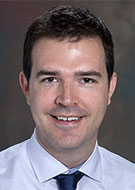
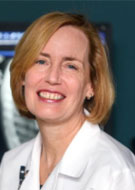
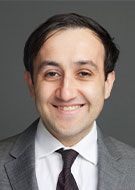
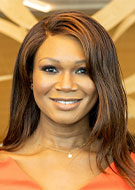
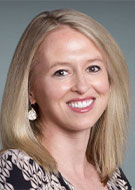
Receiving an RSNA R&E Foundation grant can provide researchers with the necessary financial resources to conduct in-depth studies, allowing them to explore innovative ideas and advance scientific knowledge.
Another primary benefit is that the grant enhances the credibility and reputation of researchers, often leading to increased visibility within their institution and the specialty. In some cases, this can lead to promotions, tenure and additional funding opportunities. The institutions where grantees work benefit as well, as successful grant acquisition can improve their rankings, attract top talent and foster a vibrant research environment.
Progressing on a Career Path
“The RSNA Scholar grant definitely helped me secure and develop in my career as junior faculty,” said Brent D. Weinberg, MD, PhD, director, Neuroradiology Division, director, Radiology Residency Research Track and associate professor, Radiology and Imaging Sciences at Emory University in Atlanta. “It provided me protected time to continue my research, publish several papers on the topic, and present multiple abstracts. The grant gained attention in my department and gave credibility to my work, helping justify requests for additional resources and time.”
Dr. Weinberg received the 2020 Bracco Diagnostics Inc./RSNA Research Scholar Grant, which he cites as the most influential in starting his career. For the project, he studied a structured system for improving the interpretation of follow-up MRIs in brain tumor patients, the Brain Tumor-Reporting and Data System (BT-RADS). As the grant’s principal investigator, Dr. Weinberg and his team developed a software system for better quantifying the long-term follow up for these patients, including developing automated volumetric analysis and statistics for predicting patient outcomes.
“As a result of the grant, there is stronger evidence to support the use of BT-RADS that will ultimately help it become a national standard,” Dr. Weinberg said.
For some researchers, an R&E grant provides direction for their career, as in the case of Talissa Altes, MD, chair of Radiology at the University of Missouri in Columbia.
“As a resident, I matched in the research track of diagnostic radiology at the University of Virginia and, though I was on the research track, in my own mind I was uncertain whether academics would be a good fit for me,” Dr. Altes said. “I was uncertain whether I had any aptitude for radiology research and had little insight into the tradeoffs between academic and private practice. The downstream effects from receiving an RSNA Research Resident grant in 1997 set me firmly on a path toward academics.”
Dr. Altes developed an animal (rabbit) model for intracranial aneurysms to be used in testing different embolization techniques. She and her team proposed to surgically create a blind ending vessel, bathe it in elastase and allow it to mature into a thin-walled saccular aneurysm model.
“As is so often the case, it took quite a bit of trial and error to develop a procedure that reliably created aneurysms of the desired size and characteristics. The resident research grant gave me the opportunity to do my own project from start to finish in my second year of residency,” Dr. Altes said. “The article on the funded research was published in the American Journal of Radiology (AJR) and was my first publication as first author—another valuable academic growth opportunity. Having the luxury of dedicated time for research during residency was absolutely pivotal and these experiences laid the foundation for my academic career.”

Greater Visibility Across the Specialty
Presenting research at highly visible medical conferences and scientific assemblies is another way R&E Foundation grantees receive recognition for their work.
The findings of the study funded by a 2020 Guerbet/RSNA Research Scholar Grant allowed Hersh Sagreiya, MD, assistant professor of radiology, University of Pennsylvania in Philadelphia, to present unique versions of the results at several scientific meetings, including RSNA and the Society for Imaging Informatics in Medicine.
His grant research developed machine learning algorithms for hepatic fat quantification using US, comparable to MR-derived data. In addition, the hepatic fat quantification from this study was linked via the Penn Medicine BioBank to genomic and phonemic data related to differences in hepatic fat. This later led to the development of large-scale algorithms for automating hepatic fat quantification using CT, which were clinically implemented in the Penn Medicine PACS system, along with an AI pipeline for delivering these results.
“This research garnered notice within my department and has led to several research opportunities, as I have become involved in several projects that involve machine learning applied to medical imaging,” Dr. Sagreiya said.
After completing two successful R&E Foundation grants, he has pursued additional funding from other sources.
“As I have previously received R&E Foundation grants, I felt confident pursuing other grant opportunities,” he said. “For instance, I received the American Lung Association COVID-19 and Emerging Respiratory Viruses Research Award as PI.”
Toma S. Omofoye, MD, associate professor and director of breast imaging, Global Oncology Program for the University of Texas MD Anderson Cancer Center in Houston, credits her 2022 Helen C. Redman, MD & Marten F. Klop Education Scholar Grant for helping her secure a new position.
“I am the inaugural Director of Breast Imaging, Global Oncology Program for the University of Texas MD Anderson Cancer Center. The funding helped connect me with RSNA resources, mentors and collaborators, which expanded my network and refined the project,” Dr. Omofoye said. “I was invited to contribute articles and was interviewed on podcasts which provided publicity and also peer review to increase my effectiveness. The funding, project success and expanded network created a synergistic effect to demonstrate my expertise in the global health field. This grant undoubtedly helped me secure this new position.”
Dr. Omofoye’s grant research focused on the development of a web-based global breast imaging curriculum for radiologists in low- and middle-income countries.
“In addition to poor breast cancer survival outcomes in low and middle-income countries, there is increasing incidence of the disease. These countries also face a severe shortage of radiologists, knowledge gaps in breast imaging and limited opportunities for training,” Dr. Omofoye said. “In our project, a collaboratively designed, comprehensive breast imaging training program provided customized resources and telementoring for radiologists practicing in low-resource areas. Through the novel learning assessment tests, we are also able to assess the increasing competency of the participants.”
Dr. Omofoye used the skills developed during her grant funding to seek and secure additional funding to expand the scope of the program and measure its impact.

Gaining Skills to Benefit Future Research
R&E Foundation grant recipients grow and develop new skills as they learn how to manage grant funds and research time effectively.
Erin Alaia, MD, associate professor of radiology and orthopedic surgery at NYU Grossman School of Medicine, received a 2022 RSNA Research Seed Grant that helped her develop as an academic radiologist.
“The grant taught me how to manage funding and a research team, including budget management, hiring and overseeing research staff. I also learned a lot about research avenues that were relatively new to me, including using a large public database to examine national utilization trends, overseeing a systematic review and performing a cost-effectiveness analysis study,” Dr. Alaia said. “I will carry the skills I have learned as a result of this grant into my future research.”
Dr. Alaia’s funded research examined the utility of MRI imaging for patients aged 50 and above with hip or knee pain. The utility of imaging in this patient cohort was performed with a systematic review, a review of national utilization trends, and a cost-effectiveness analysis.
“So far, the systematic review supported by this grant was published in the American Journal of Roentgenology, and the report on national utilization trends has been submitted for publication,” Dr. Alaia said. “We are still in the process of carrying out the cost-effectiveness analysis.”
Grant Recipients Pay It Forward
Following receipt of a grant or multiple grants, many recipients pay it forward, encouraging younger radiologists to apply for funding or serving as a mentor to those just starting a research project.
“I have encouraged colleagues to apply for R&E Foundation grants and have shared my grant application with others as a useful sample for successful grant funding,” Dr. Alaia said. “I have also made colleagues aware of the wonderful resources at my institution promoting the success of grant applications.”
After receiving his grants, Dr. Weinberg volunteered his time to assist the R&E Foundation with grant review.
“I have tried to pay it forward as many was as possible to the R&E Foundation as I feel they have contributed to my career in so many ways,” he said. “I encourage our junior faculty and trainees to apply for RSNA grants and I try to give them useful advice for how to succeed in their application. I am the director of our research track residency, and I try to encourage all of our residents to apply. In fact, in a recent cycle, two of our residents received the resident scholar grant, another one received an education grant, and a medical student got a student grant. This is a landmark and record setting year for us with RSNA.”
Dr. Sagreiya also steers colleagues to R&E Foundation grants and gives his time back to the Foundation.
“I have advised future applicants to RSNA Scholar grants and have also reviewed for several RSNA grants,” he said.
The funding and support provided by the R&E Foundation can play a big role in advancing not only unique research to propel the specialty forward but also the careers of those willing to seek funding.
“Following my funding, I eventually became vice chair of clinical research at the University of Virginia and am now chair of radiology at the University of Missouri. In these roles I have had the opportunity to mentor numerous junior faculty in writing their first proposal, something I enjoy because I know just how important an early success can be,” Dr. Altes said. “I am now a successful clinician scientist and have published over 120 peer-reviewed papers, given over 200 invited lectures, and obtained federal, state and foundation funding for my research. The RSNA grant was a key enabler for my future success by allowing me to discover my passion for radiology research and develop a research skillset.”
For More Information
Help the R&E Foundation celebrate its 40th anniversary
Learn more about available R&E Foundation grants.
Text 40TH to 71777 or donate online to make your contribution honoring four decades of funding radiology’s future. Annual cumulative donations over $300 will be acknowledged at RSNA 2024 with onsite benefits.